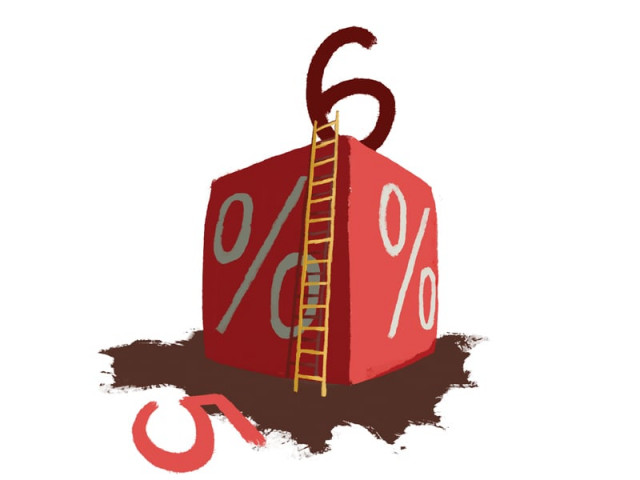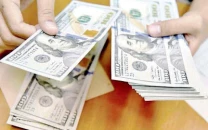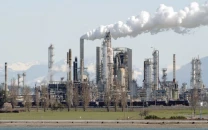Monetary policy: State Bank mandates higher returns for savings accounts
Leaves the benchmark discount rate unchanged at 12%.

Monetary policy: State Bank mandates higher returns for savings accounts
For the first time in four years, the most talked about number in the State Bank of Pakistan’s monetary policy statement was not the benchmark discount rate.
In its announcement on Friday, the central bank left its benchmark discount rate unchanged at 12%, in line with market expectations. Yet the SBP managed to deliver a surprise by increasing the mandatory minimum interest rate that banks must pay their depositors on savings accounts, from 5% to 6%. The change is the first since the minimum interest rate was introduced in May 2008, and will be applicable from May 1, 2012.
“The rigidity of the deposit rates, especially for small savers, is adversely impacting the savings to investment ratio of the economy,” read a statement released by the SBP on behalf of its Central Board of Directors. “A more balanced risk-reward incentive structure is warranted in the shape of an appropriate deposit structure as savers, especially the smaller ones, need to be adequately compensated.”
About 15 million of the 28.7 million bank accounts in the country – about 52% – are savings accounts, constituting about Rs2.1 trillion, or about 38% of the total deposits in the banking system, according to State Bank’s most recent data from July 2011.
Interest rates for depositors in Pakistan had been abysmally low before the SBP intervened in 2008. The average savings account yielded about 2.1% before the minimum rate was imposed, after which it rose to 5.25%, where it has remained since then.
The State Bank has tried to force the banks to pay out higher rates on deposits by introducing more competition, such as the ability to directly invest in government bonds. Yet it seems that the central bank may have become more frustrated and at last taken more direct measures, though some experts say the move is mostly symbolic.
“It is more of a warning shot,” said one person familiar with the matter.
The banks are unlikely to be happy at what is effectively a reduction in their net revenues. Farhan Mahmood, a research analyst at Topline Securities, reckons that as a result of the 1% increase, the banks will lose about Rs17 billion from their net interest income – the difference between what banks receive from their borrowers and what they pay out their depositors.
Bilal Qamar of JS Global Capital points out that the banks were already expecting lower net interest income as a result of the lower discount rate. “Net interest margins adjust with some lag,” Qamar told The Express Tribune. “Since the last downward revisions of Kibor [Karachi Interbank Offer Rate] in response to the reductions the SBP’s discount rate, the bank’s interest income has not yet come down. It is expected to do so in the second and third quarter of 2012.”
In a note issued to clients on Friday evening, analysts at KASB Securities said they expected the measure to result in a reduction in the net profits of the big four banks by 7% to 11%. The big four – National Bank of Pakistan, Habib Bank, MCB Bank and United Bank – are the country’s largest banks in terms of assets.
Monetary policy
The State Bank’s statement included worries about low growth, inflation and the government’s continued insistence on heavy borrowing from the banking sector and the central bank itself. Government borrowing from the banks has risen 56.5% during the first nine month of fiscal year 2012, compared to only a 4.2% increase in private sector lending.
Fears of higher inflation ahead appear to have kept the monetary policy rate at 12%. Inflation hit 10.8% in March, though more worryingly from the perspective of the SBP, core inflation – a more reliable measure of inflation that excludes the more volatile effects of food and energy prices – has been rising steadily since August.
Karachi Chamber of Commerce and Industry President Mian Abrar Ahmed
“The decision to fix minimum deposit rate at 6% is good for savings, as it will give more to the customers. More savings means more money for investment. Our savings rate reflects our habit of low saving and more spending.”
Sialkot Chamber of Commerce and Industry President Naeem Anwar Qureshi
“We were expecting at least a 50 to 100 basis points cut in the interest rate. This time our hopes were high
as central bank decided to keep interest rates unchanged at 12% last time around as well.”
Lahore Chamber of Commerce and Industry President Irfan Qaiser Sheikh
“With high interest rates, it is difficult for us to compete with our regional competitors like India and Bangladesh where rate of financing stands at 10 to 11% whereas we get financing at 16%.”
Overseas Investors Chamber of Commerce & Industry President Humayun Bashir
“Keeping the interest rate unchanged and giving itself a cushion is understandable amid rising international oil prices and inflation. Although, it is negative for business but it’s a price we have to pay.”
Published in The Express Tribune, April 14th, 2012.



















COMMENTS
Comments are moderated and generally will be posted if they are on-topic and not abusive.
For more information, please see our Comments FAQ